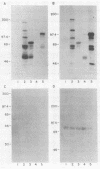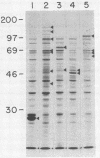Abstract
We expressed the gene that encodes one of the major surface antigens of Entamoeba histolytica, the 170-kDa protein (1,270 amino acids), as a glutathione S-transferase fusion protein containing amino acids 1 to 1202 (lacking the putative transmembrane and cytoplasmic regions) and as separate fusion proteins containing each of three major domains of the 170-kDa molecule. Lysates from bacteria induced to express one of these proteins were used as the target antigens in a Western blot (immunoblot) analysis to determine whether a recombinant 170-kDa antigen could serve as the basis for a serologic test used to detect invasive amebiasis and whether there are differences in humoral immunogenicity among the three major domains of the 170-kDa antigen. Among patients with invasive amebiasis from three major areas where the disease is endemic and two sites in the United States, 54 (90%) of 60 had antibodies to the recombinant 170-kDa protein. Among 37 patients from regions where the disease is endemic and 20 patients from the United States without amebic disease, 1 (2%) of 57 had antibodies to the recombinant 170-kDa protein. We found significant differences in seroreactivity to each of three major domains of the molecule among patients seropositive for the complete construct, ranging from 100% seroreactivity with the fusion protein containing the domain designated cysteine rich and 89% seropositivity with the fusion protein incorporating a portion of the region designated cysteine poor to only 9% seropositivity for the fusion protein containing the pseudorepeat domain. Our study indicates that a serologic test based on the recombinant 170-kDA antigen could serve as a highly sensitive and specific test for acute invasive amebiasis.
Full text
PDF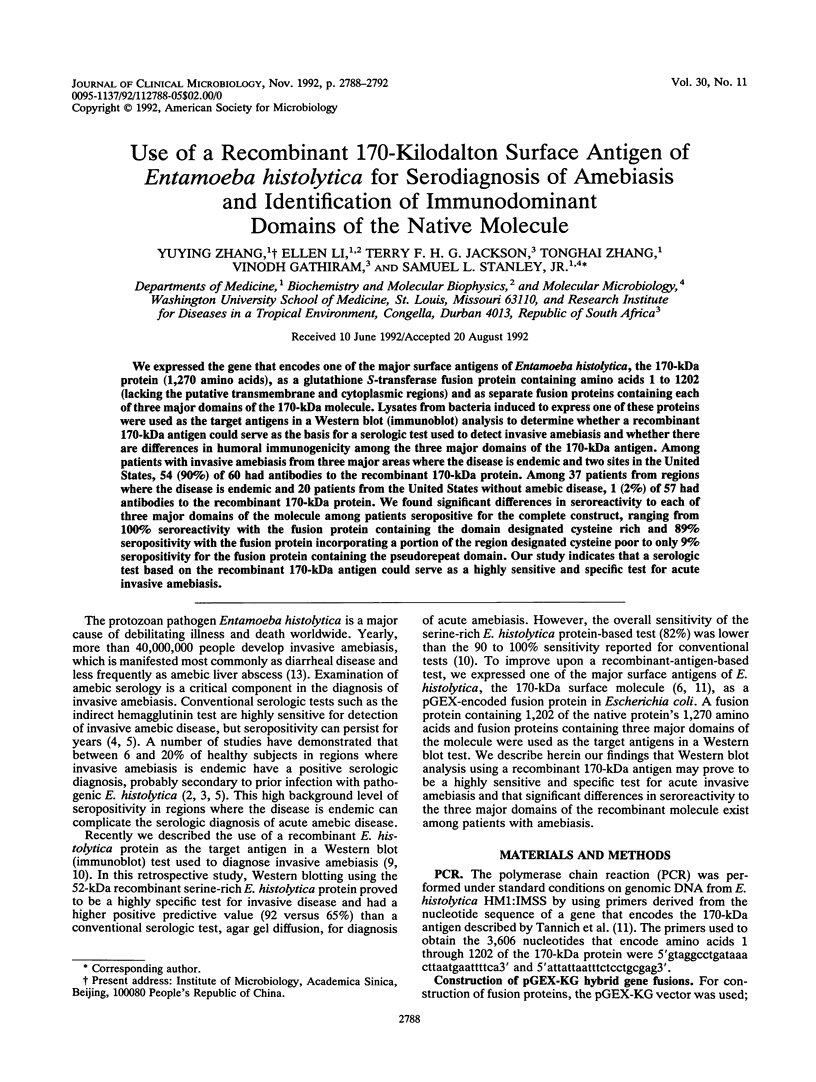
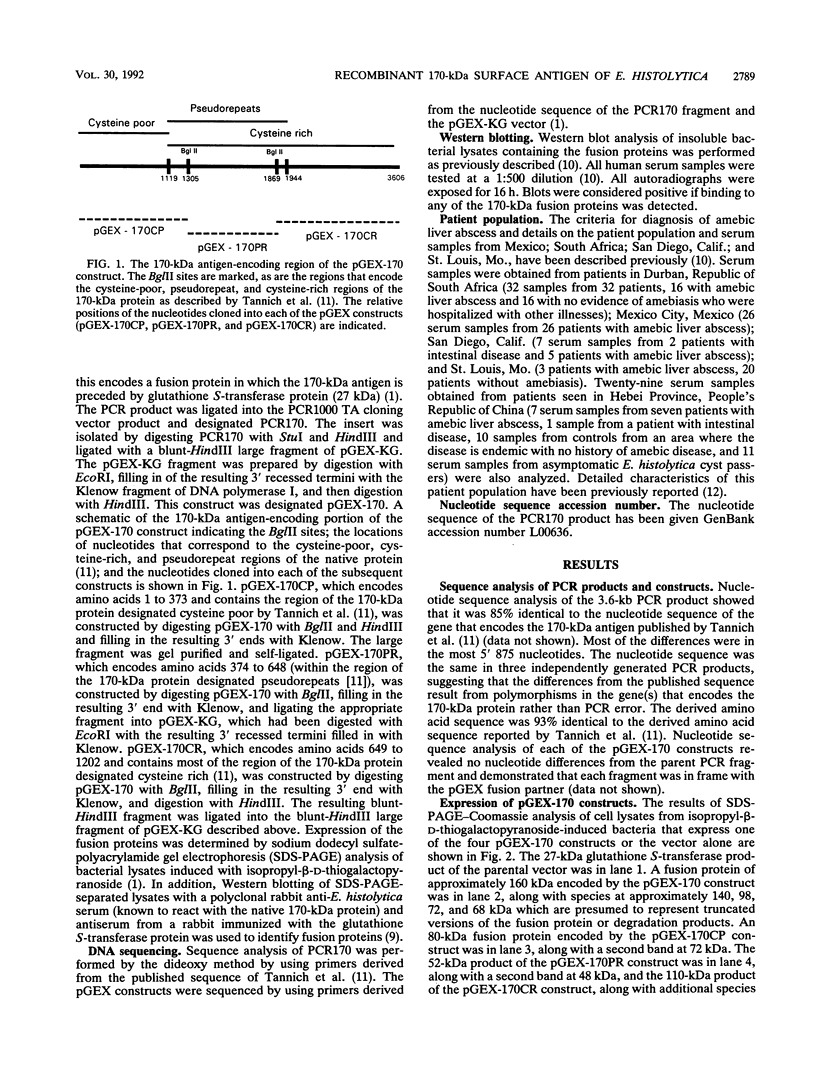
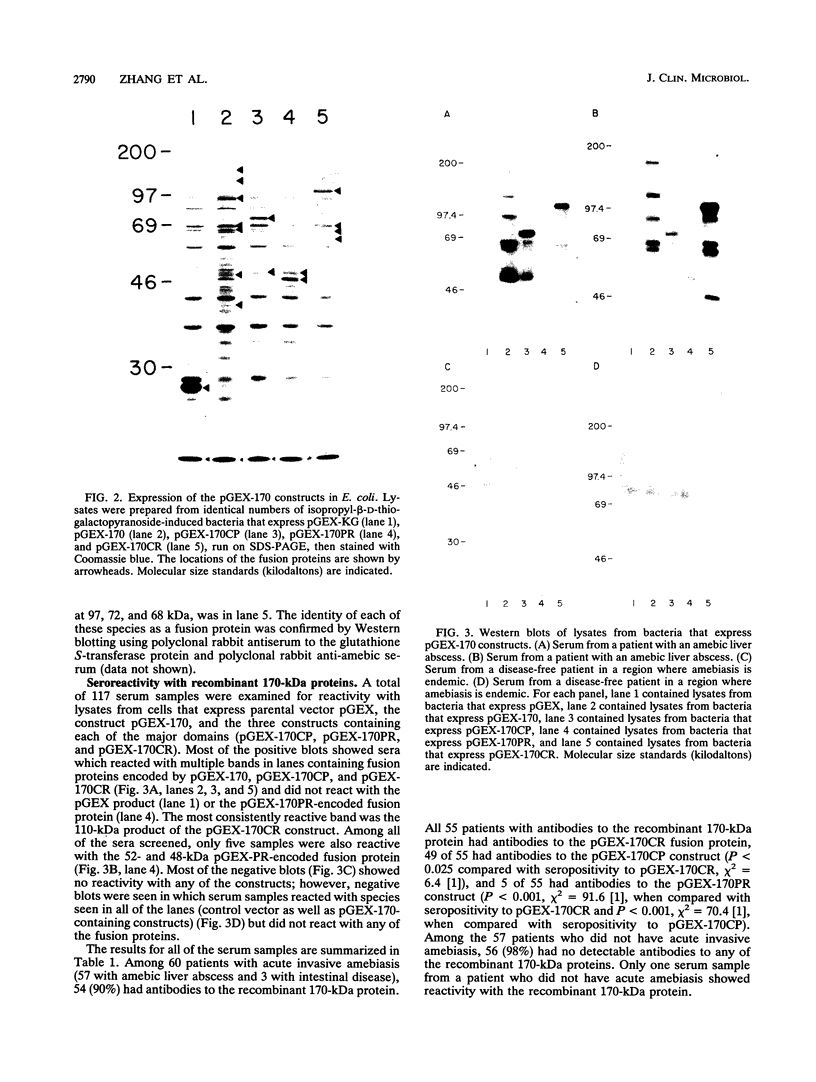
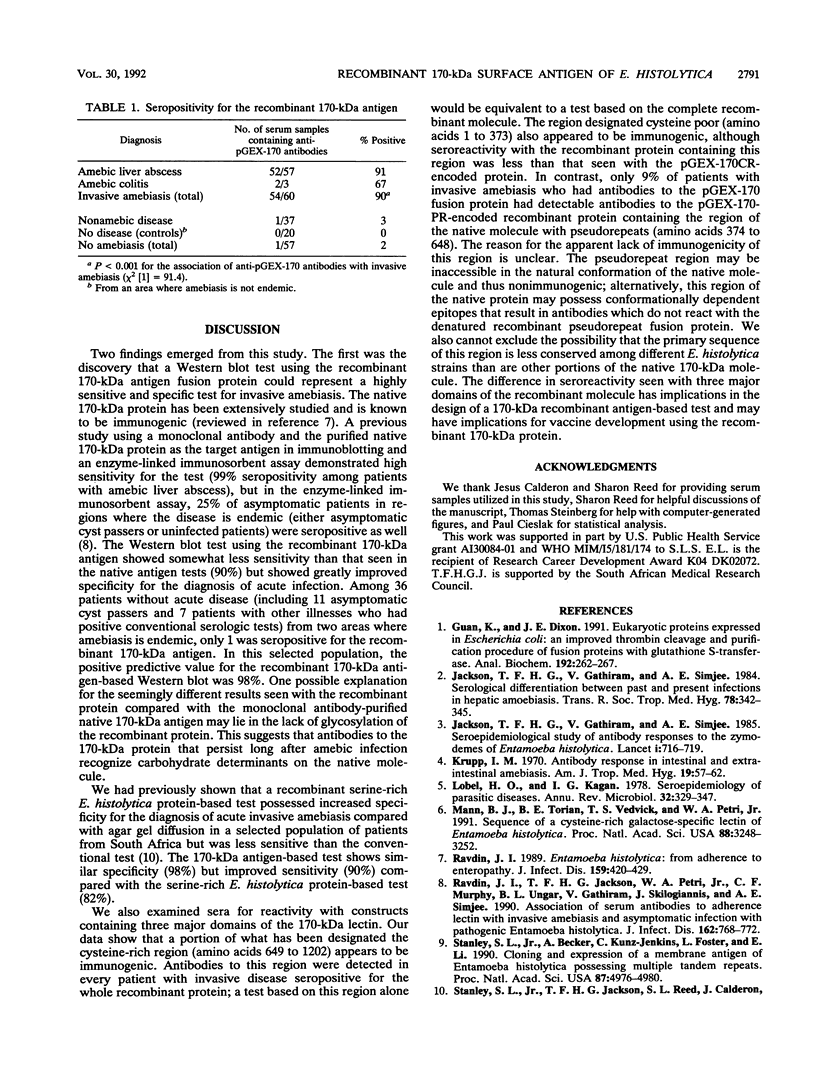
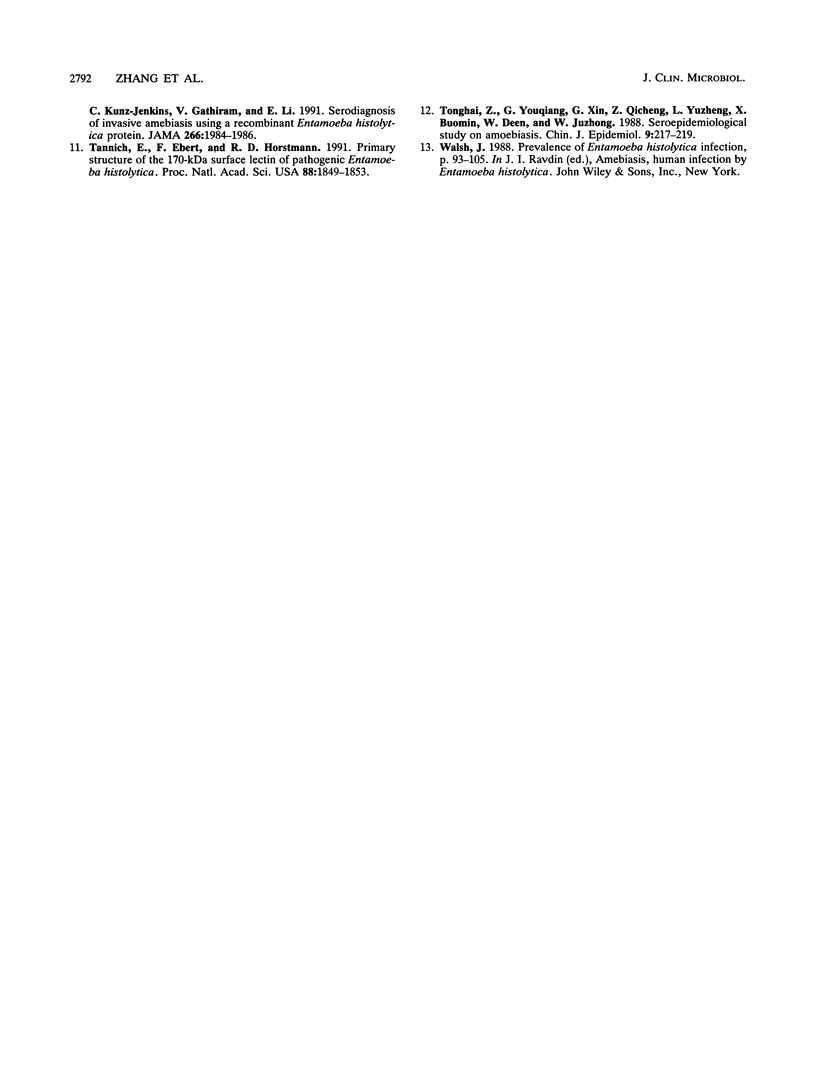
Images in this article
Selected References
These references are in PubMed. This may not be the complete list of references from this article.
- Guan K. L., Dixon J. E. Eukaryotic proteins expressed in Escherichia coli: an improved thrombin cleavage and purification procedure of fusion proteins with glutathione S-transferase. Anal Biochem. 1991 Feb 1;192(2):262–267. doi: 10.1016/0003-2697(91)90534-z. [DOI] [PubMed] [Google Scholar]
- Jackson T. F., Anderson C. B., Simjee A. E. Serological differentiation between past and present infection in hepatic amoebiasis. Trans R Soc Trop Med Hyg. 1984;78(3):342–345. doi: 10.1016/0035-9203(84)90115-9. [DOI] [PubMed] [Google Scholar]
- Jackson T. F., Gathiram V., Simjee A. E. Seroepidemiological study of antibody responses to the zymodemes of Entamoeba histolytica. Lancet. 1985 Mar 30;1(8431):716–719. doi: 10.1016/s0140-6736(85)91262-0. [DOI] [PubMed] [Google Scholar]
- Krupp I. M. Antibody response in intestinal and extraintestinal amebiasis. Am J Trop Med Hyg. 1970 Jan;19(1):57–62. doi: 10.4269/ajtmh.1970.19.57. [DOI] [PubMed] [Google Scholar]
- Lobel H. O., Kagan I. G. Seroepidemiology of parasitic diseases. Annu Rev Microbiol. 1978;32:329–347. doi: 10.1146/annurev.mi.32.100178.001553. [DOI] [PubMed] [Google Scholar]
- Mann B. J., Torian B. E., Vedvick T. S., Petri W. A., Jr Sequence of a cysteine-rich galactose-specific lectin of Entamoeba histolytica. Proc Natl Acad Sci U S A. 1991 Apr 15;88(8):3248–3252. doi: 10.1073/pnas.88.8.3248. [DOI] [PMC free article] [PubMed] [Google Scholar]
- Ravdin J. I. Entamoeba histolytica: from adherence to enteropathy. J Infect Dis. 1989 Mar;159(3):420–429. doi: 10.1093/infdis/159.3.420. [DOI] [PubMed] [Google Scholar]
- Ravdin J. I., Jackson T. F., Petri W. A., Jr, Murphy C. F., Ungar B. L., Gathiram V., Skilogiannis J., Simjee A. E. Association of serum antibodies to adherence lectin with invasive amebiasis and asymptomatic infection with pathogenic Entamoeba histolytica. J Infect Dis. 1990 Sep;162(3):768–772. doi: 10.1093/infdis/162.3.768. [DOI] [PubMed] [Google Scholar]
- Stanley S. L., Jr, Becker A., Kunz-Jenkins C., Foster L., Li E. Cloning and expression of a membrane antigen of Entamoeba histolytica possessing multiple tandem repeats. Proc Natl Acad Sci U S A. 1990 Jul;87(13):4976–4980. doi: 10.1073/pnas.87.13.4976. [DOI] [PMC free article] [PubMed] [Google Scholar]
- Stanley S. L., Jr, Jackson T. F., Reed S. L., Calderon J., Kunz-Jenkins C., Gathiram V., Li E. Serodiagnosis of invasive amebiasis using a recombinant Entamoeba histolytica protein. JAMA. 1991 Oct 9;266(14):1984–1986. [PubMed] [Google Scholar]
- Tannich E., Ebert F., Horstmann R. D. Primary structure of the 170-kDa surface lectin of pathogenic Entamoeba histolytica. Proc Natl Acad Sci U S A. 1991 Mar 1;88(5):1849–1853. doi: 10.1073/pnas.88.5.1849. [DOI] [PMC free article] [PubMed] [Google Scholar]



